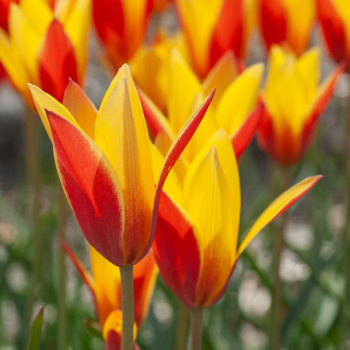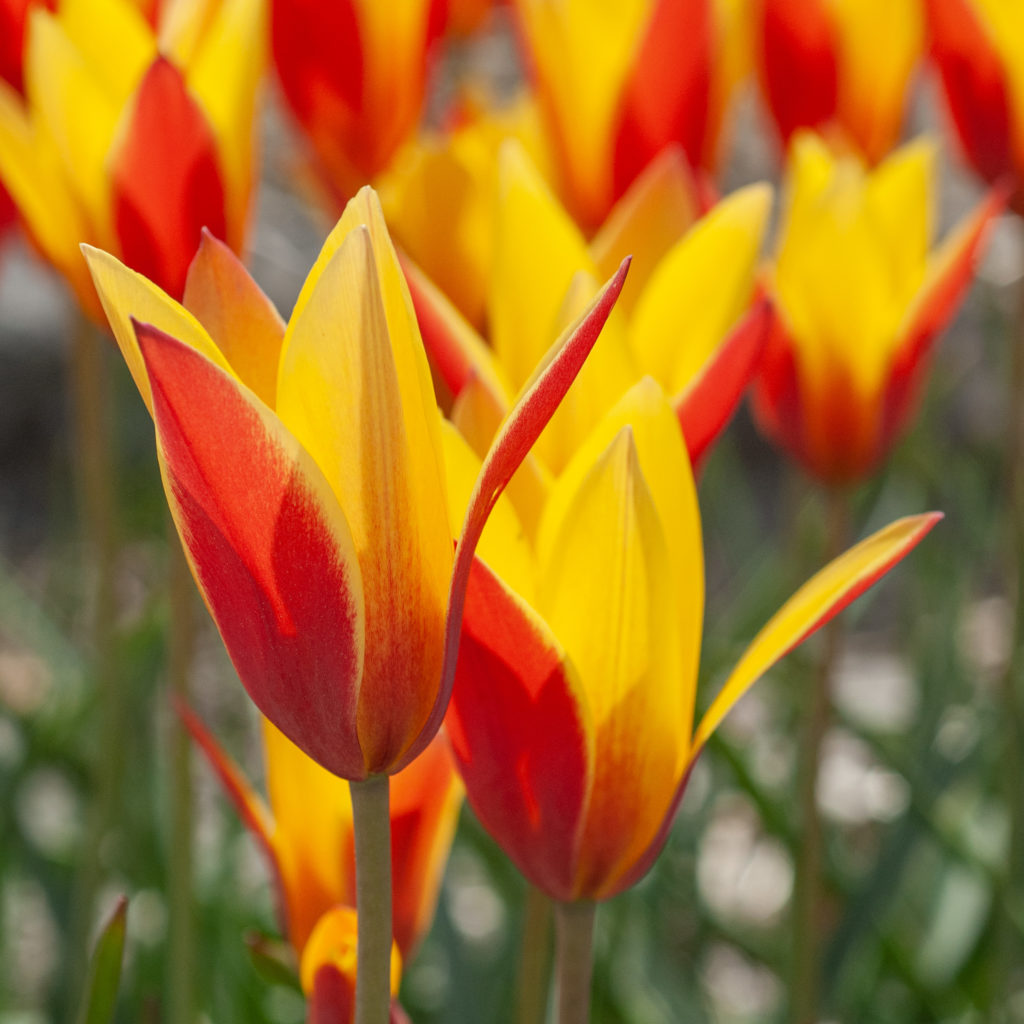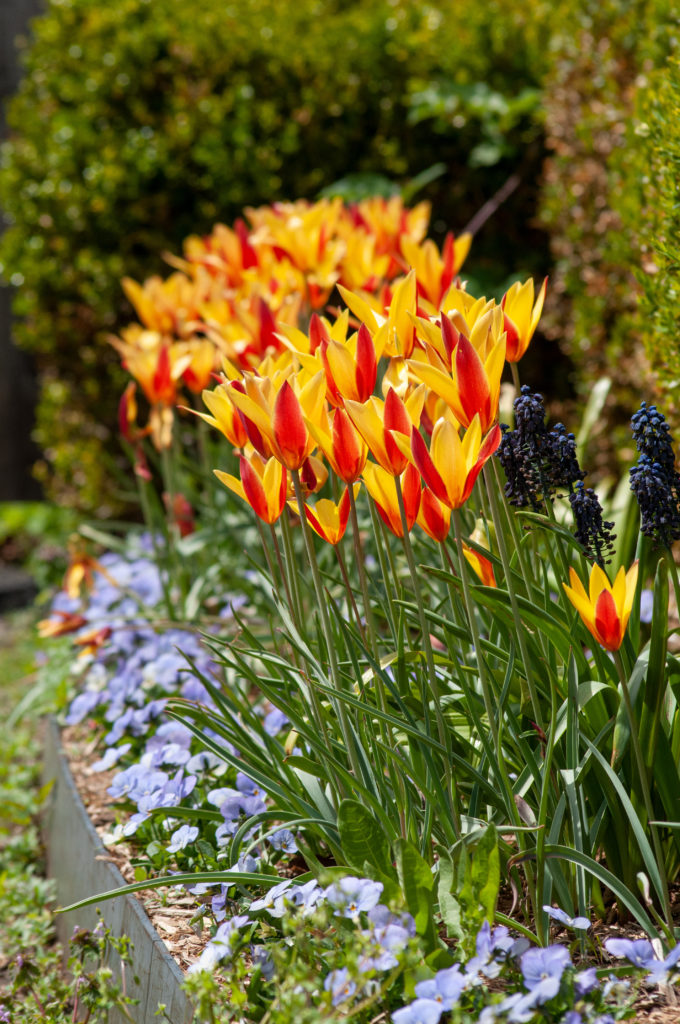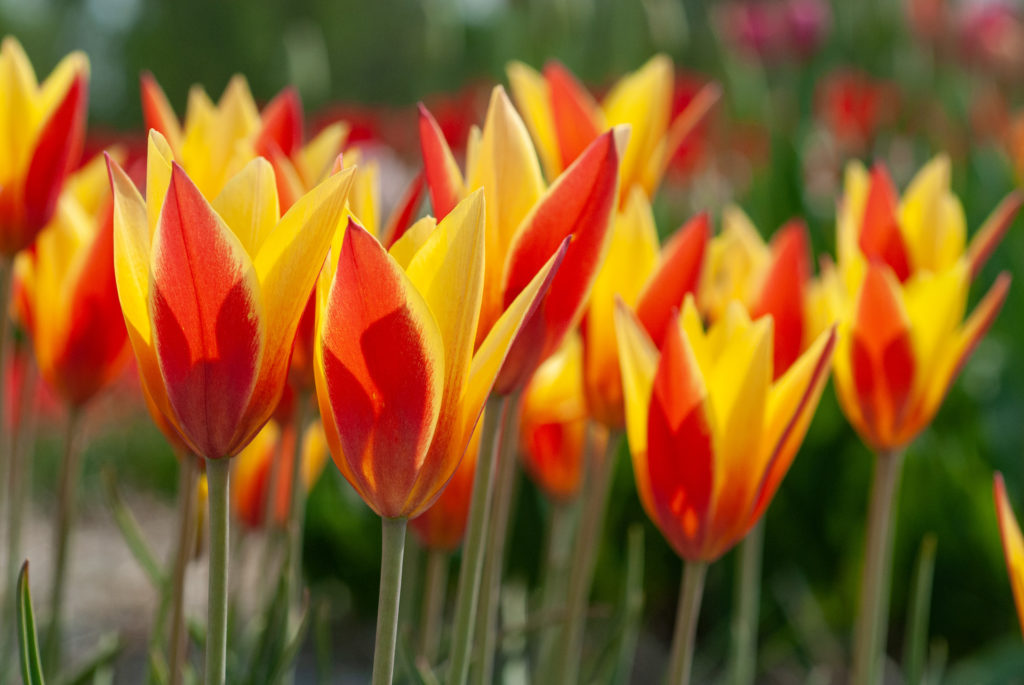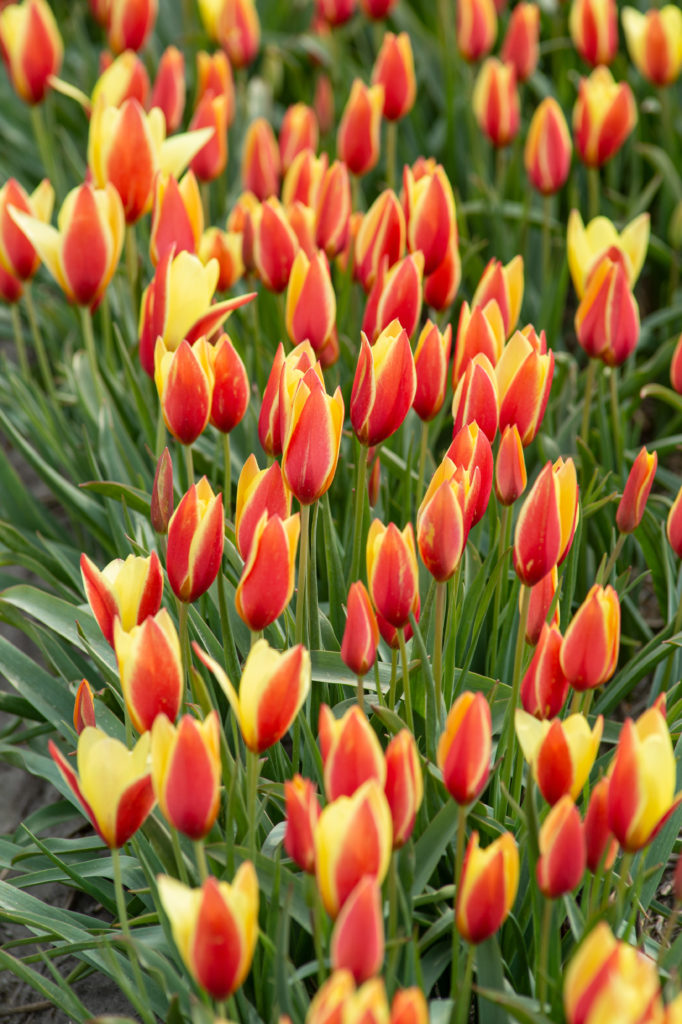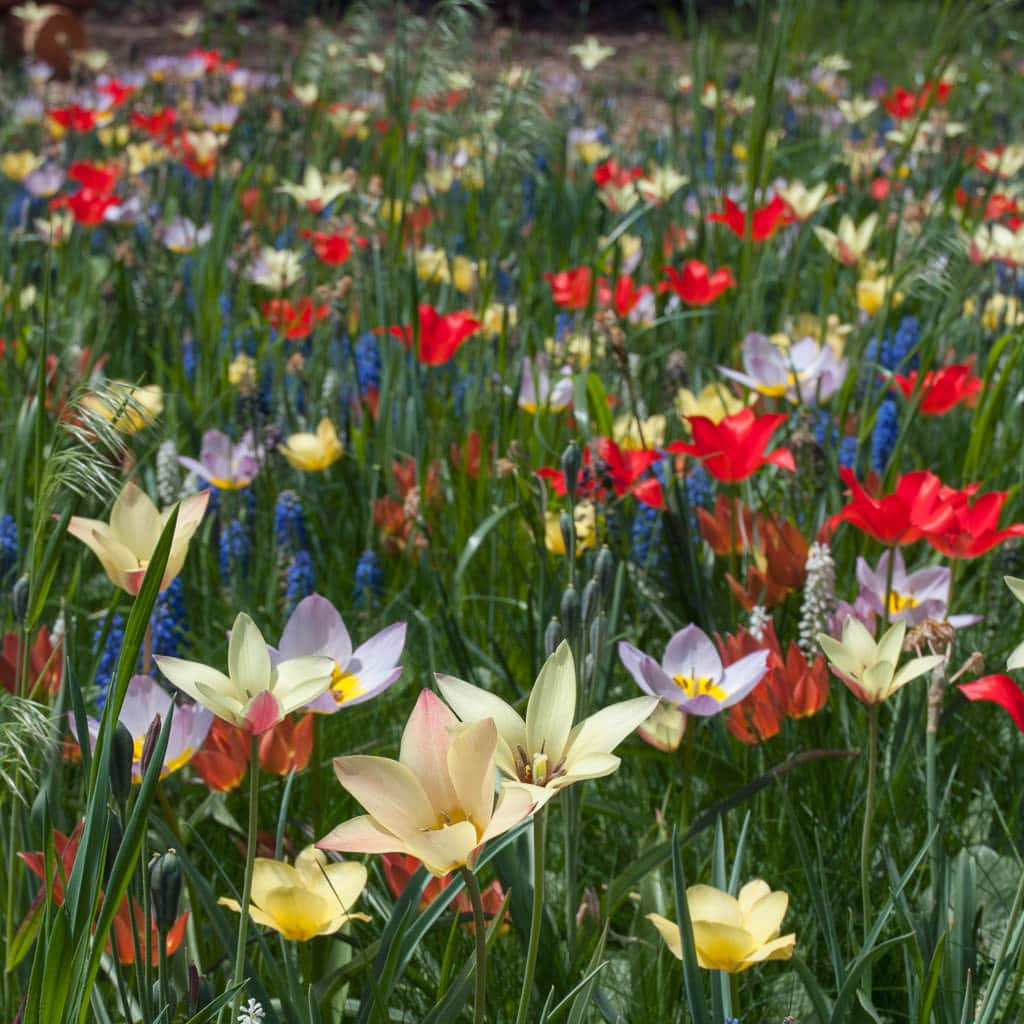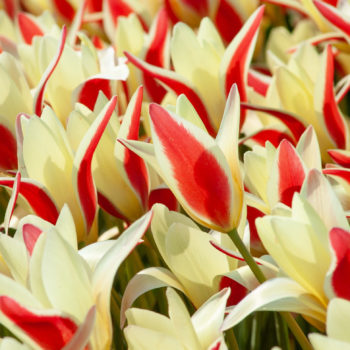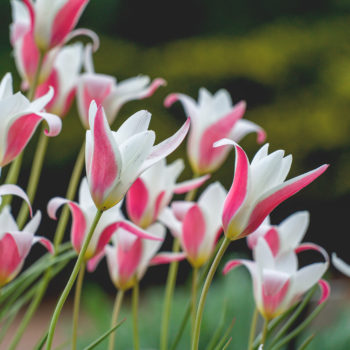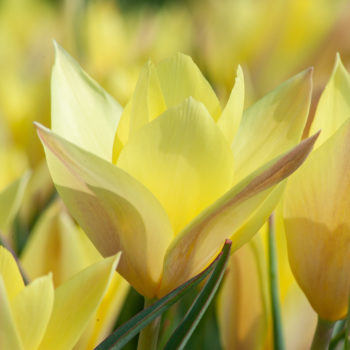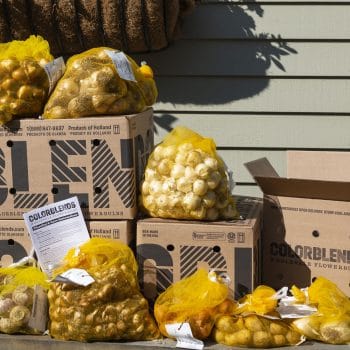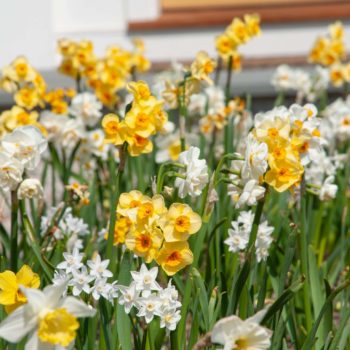Tubergen’s Gem Tulips
Tulipa clusiana
Specifications
Scarlet buds open to yellow stars. Mass them for a cheery sight that can repeat itself for a year or three. Tubergen’s Gem is a selection of Tulipa clusiana, which makes its home in Afghanistan and Tibet.
| Item # | 1026 |
| Height | 8—10 inches |
| Sunlight | Full (6+ hours sun per day) |
| Soil | Well drained |
| Flower Color | Yellow with Red |
| Bulb Size |
5-6cm ?
Bulb size is determined by the circumference around the largest part of the bulb. Colorblends only delivers top size bulbs. Large bulbs produce more or larger flowers than small bulbs.
|
| USDA Zones |
3a—8b ?
Hardy in USDA zones 3a to 8b in the South or 10b on the West Coast. Prechill in zones 7b and warmer in the South, Southwest, and California.
|
| Bloom Time | Mid-Late |
- early
- mid
- late
Delivery & Planting Times
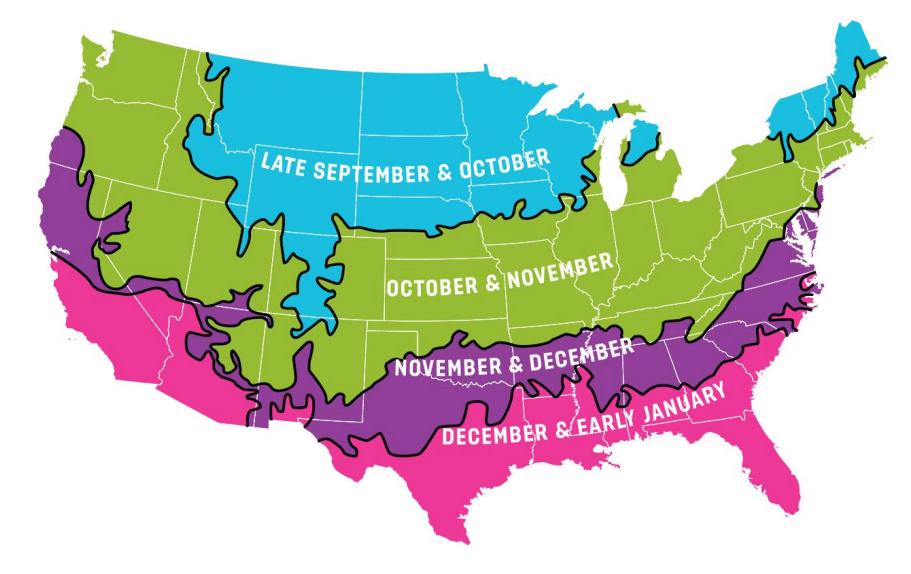
Spring-flowering bulbs must be planted in the fall. They need cool soil to make roots before the onset of winter. Cool fall weather arrives at different times from north to south and from high elevations to low.
Please note that the temperature of the soil lags behind the air temperature. You can generally plant later than the windows provided in this map. As long as the ground is not frozen, you can still plant.
Tubergen’s Gem Tulips
Tulipa clusiana
Scarlet buds open to yellow stars. Mass them for a cheery sight that can repeat itself for a year or three. Tubergen’s Gem is a selection of Tulipa clusiana, which makes its home in Afghanistan and Tibet.
| Item # | 1026 |
| Height | 8—10 inches |
| Sunlight | Full (6+ hours sun per day) |
| Soil | Well drained |
| Flower Color | Yellow with Red |
| Bulb Size |
5-6cm ?
Bulb size is determined by the circumference around the largest part of the bulb. Colorblends only delivers top size bulbs. Large bulbs produce more or larger flowers than small bulbs.
|
| USDA Zones |
3a—8b ?
Hardy in USDA zones 3a to 8b in the South or 10b on the West Coast. Prechill in zones 7b and warmer in the South, Southwest, and California.
|
| Bloom Time | Mid-Late |
- early
- mid
- late
Bulb Calculator
To find the number of bulbs you need, enter the square footage of the planting area in the box below.
Area
In Sq. Ft.
Density
Bulbs/
sq. ft.
Bulbs Needed
When to Plant

Spring-flowering bulbs must be planted in the fall. They need cool soil to make roots before the onset of winter. Cool fall weather arrives at different times from north to south and from high elevations to low.
Please note that the temperature of the soil lags behind the air temperature. You can generally plant later than the windows provided in this map. As long as the ground is not frozen, you can still plant.
Planting Instructions
Tulips perform best in full sun but will tolerate a bit of shade (some afternoon shade will prolong flower life, especially in the South). They require well-drained soil. Treat tulips as annuals if you want a perfect display: After they flower, lift and discard the bulbs and replant fresh ones in the fall. In a less formal situation, you can leave the bulbs in place. The flowers will be uneven in size and height and generally much fewer in number, but that can have its own charm.
To encourage tulips to bloom again in future years we recommend that you:
- Remove the spent flowers as soon as the bulbs finish blooming. Snapping off the top 3 inches of the flower stem prevents seed formation and focuses energy instead on bulb growth.
- Allow the foliage to wither completely before you remove it.
- Avoid summer irrigation. Tulips prefer to be dry during their dormancy.
| Depth of Planting Hole | 4 inches |
| Spacing | 3 inches apart |
Planting Instructions
Tulips perform best in full sun but will tolerate a bit of shade (some afternoon shade will prolong flower life, especially in the South). They require well-drained soil. Treat tulips as annuals if you want a perfect display: After they flower, lift and discard the bulbs and replant fresh ones in the fall. In a less formal situation, you can leave the bulbs in place. The flowers will be uneven in size and height and generally much fewer in number, but that can have its own charm.
To encourage tulips to bloom again in future years we recommend that you:
- Remove the spent flowers as soon as the bulbs finish blooming. Snapping off the top 3 inches of the flower stem prevents seed formation and focuses energy instead on bulb growth.
- Allow the foliage to wither completely before you remove it.
- Avoid summer irrigation. Tulips prefer to be dry during their dormancy.
| Depth of Planting Hole | 4 inches |
| Spacing | 3 inches apart |

